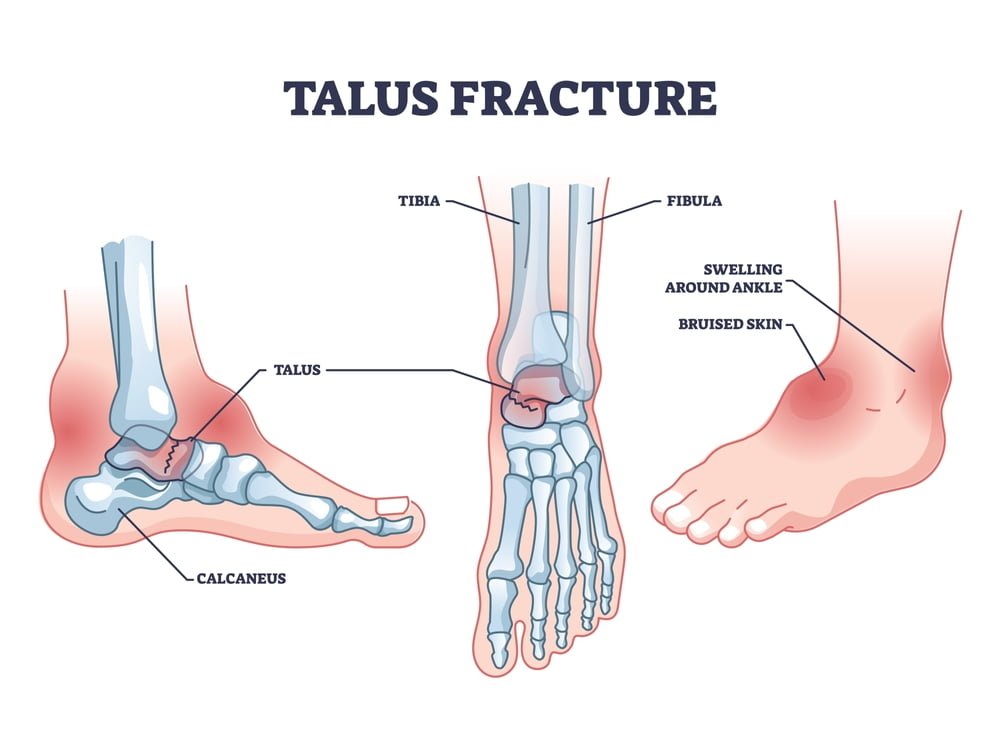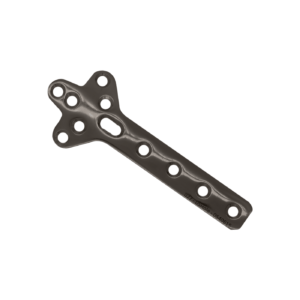
Talus fractures are complex injuries that can significantly impact the function and mobility of the ankle joint. The talus bone, located in the ankle, plays a crucial role in weight-bearing and movement. When a talus fracture occurs, proper treatment is essential for optimal recovery. This blog post aims to provide you with a comprehensive understanding of talus fractures, their types, and the role of orthopedic plates in their treatment.
Understanding Talus Fractures
The talus bone is a small, cube-shaped bone that connects the leg to the foot. Talus fractures can occur due to various reasons, including trauma, such as falls, car accidents, or sports injuries. These fractures can range from simple, non-displaced fractures to more complex, displaced fractures that involve multiple bone fragments.
Types of Talus Fractures
Talar Neck Fracture: This type of fracture occurs at the narrow part of the talus bone, known as the neck. Talar neck fractures are often caused by high-energy trauma, such as severe falls or motor vehicle accidents.
Talar Body Fracture: Fractures in the body of the talus involve a break in the central portion of the bone. These fractures are typically caused by high-energy trauma or excessive axial loading on the foot.
Talar Head Fracture: Fractures at the top of the talus bone, near the ankle joint, are known as talar head fractures. They are relatively rare and can be associated with ankle dislocations or other fractures in the foot and ankle region.
Avulsion fractures: An avulsion fracture of the talus happens when a small portion of the bone separates from the main structure due to the detachment of a ligament or tendon.
Stress fractures: A stress fracture in the talus refers to a tiny crack that develops in the bone due to repetitive stress or overuse.
Classification of Talus Fractures
Classification of talus fractures is based on the degree of displacement or movement of the bone fragments from their normal position. The classifications are as follows:
Minimally displaced or stable: Slight misalignment, relatively correct or nearly correct bone end alignment.
Displaced: A displaced talus fracture occurs when the bone breaks and the fragments shift or move away from their normal alignment.
Open or compound: An open or compound talus fracture refers to a situation where the fractured bone penetrates through the skin, creating an open wound.
Symptoms of Talus Fracture
Difficulty walking: A talus fracture can make it challenging to bear weight on the affected foot, leading to difficulty or inability to walk normally.
Inability to place weight on the foot: Due to the pain and instability caused by the fracture, you may find it impossible to put any weight on the foot without experiencing severe discomfort.
Bruising: Bruising around the ankle and foot area is a common symptom of a talus fracture. The discoloration is a result of blood leakage from damaged blood vessels.
Tenderness: The area around the fractured talus bone will be tender to the touch, causing discomfort and pain when pressure is applied.
Fracture blisters: In some cases, fluid-filled blisters known as fracture blisters may develop on the skin near the fracture site.
Causes of Talus Fractures
High-energy accidents: Car and motorcycle crashes, falls from heights, and other significant impacts can fracture the talus bone.
Sports injuries: Activities like snowboarding, which involve high speeds, jumps, and landings, can put the talus at risk of fracturing.
Twisting injuries: Forceful twisting of the ankle can lead to talus fractures, resulting in small bone fragments breaking off from the edges of the talus.
Diagnostic Procedures of Talus Fractures
- X-ray: Reveals if the talus is fractured, the alignment of bone fragments, and the number of fragments.
- Computed tomography (CT) scan: Provides cross-sectional images to assess the severity and extent of the fracture.
Surgical treatment for talus fractures
Open Reduction and Internal Fixation (ORIF): The surgeon makes an incision to realign the fractured bone fragments and uses screws, plates, or other fixation devices to stabilize the bones during the healing process.
Bone Grafting: In some cases, bone grafts may be performed to promote bone healing and fill any gaps or voids in the fractured talus.
Joint Realignment: If the fracture involves joint displacement, the surgeon may also realign the joint surfaces to restore proper joint function and reduce the risk of long-term complications.
Role of Plates in Talus Fracture Treatment
Fracture Stabilization: Plates provide stability by fixing the fractured bone fragments in their proper anatomical alignment. This helps prevent further displacement and allows for optimal healing.
Load Sharing: Plates help distribute weight-bearing forces across the fractured area, reducing stress on the healing bone. This promotes proper bone healing and minimizes the risk of implant failure.
Anatomical Restoration: The design of orthopedic plates allows for the restoration of the talus bone’s natural shape and alignment. By maintaining proper joint congruity, plates aid in preserving joint function and reducing the risk of long-term complications.
Various Plate Types: There are different types of plates available for talus fracture fixation, such as locking plates, compression plates, and reconstruction plates. The choice of plate depends on the fracture pattern and surgeon’s preference.
Major plates by Zealmax Ortho
LCP First MTP Fusion Plate – Right
- Specifically designed for first metatarsophalangeal (MTP) joint fusion in the right foot.
- Provides stability and alignment for the fusion of the big toe joint.
LCP First TMT Fusion Plate
- Designed for fusion of the first tarsometatarsal (TMT) joint.
- Offers stability and fixation for the fusion procedure.
LCP Second TMT Fusion Plate
- Intended for fusion of the second TMT joint.
- Provides stability and support during the fusion process.
LCP Cloverleaf Plate
- Features a unique cloverleaf-shaped design for versatile use in various foot and ankle fusion procedures.
- Offers stability and compression for improved bone healing.
LCP T-Fusion Plate
- Shaped like a “T” and used for fusion of the foot and ankle joints.
- Provides stable fixation and supports the fusion process.
LCP L-Fusion Plate – Right
- Designed for fusion procedures involving the right foot.
- Offers stability and alignment during fusion of specific joints.
LCP X-Plate
- Features an “X” shape and is used for complex foot and ankle fusions.
- Provides stability and fixation in multiple planes.
LCP Straight Plate
- A straight plate used for various foot and ankle fusion procedures.
- Offers stability and fixation to aid in bone healing.
LCP Foot Calcaneal Plate – Right/Left
- Designed for fractures and fusion of the calcaneus bone (heel bone) in the right or left foot.
- Provides stable fixation for proper bone healing.
LCP Micro Recon Plate
- A smaller-sized plate used for micro-reconstructive procedures in the foot and ankle.
- Offers stable fixation for smaller bone fragments.
LCP T-Plate
- Features a “T” shape and is used for stabilization and fixation in various foot and ankle surgeries.
- Provides stable support during the healing process.
LCP T-Micro Plate
- A smaller version of the T-Plate, designed for micro-reconstructive procedures in the foot and ankle.
- Offers stability and fixation for delicate bone structures.
LCP Y-Micro Plate
- Shaped like a “Y” and used for micro-reconstructive procedures in the foot and ankle.
- Provides stable fixation and support for delicate bone structures.
Conclusion
At Zealmax Ortho, we are a leading manufacturer and exporter of high-quality orthopedic implants, including fibula fracture plates, hand & foot implants, and solutions for talus fractures. Our advanced manufacturing facility ensures precision and consistency in producing superior implants.
Trusted by healthcare professionals and patients worldwide, we offer a distributor network for global sales.


